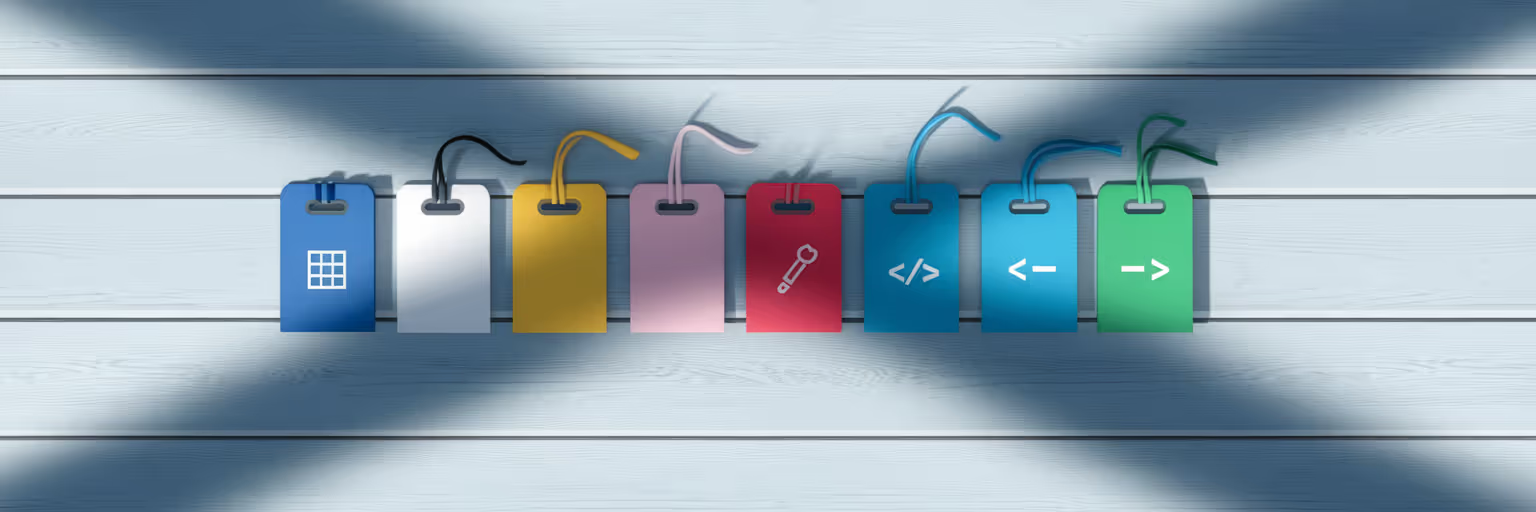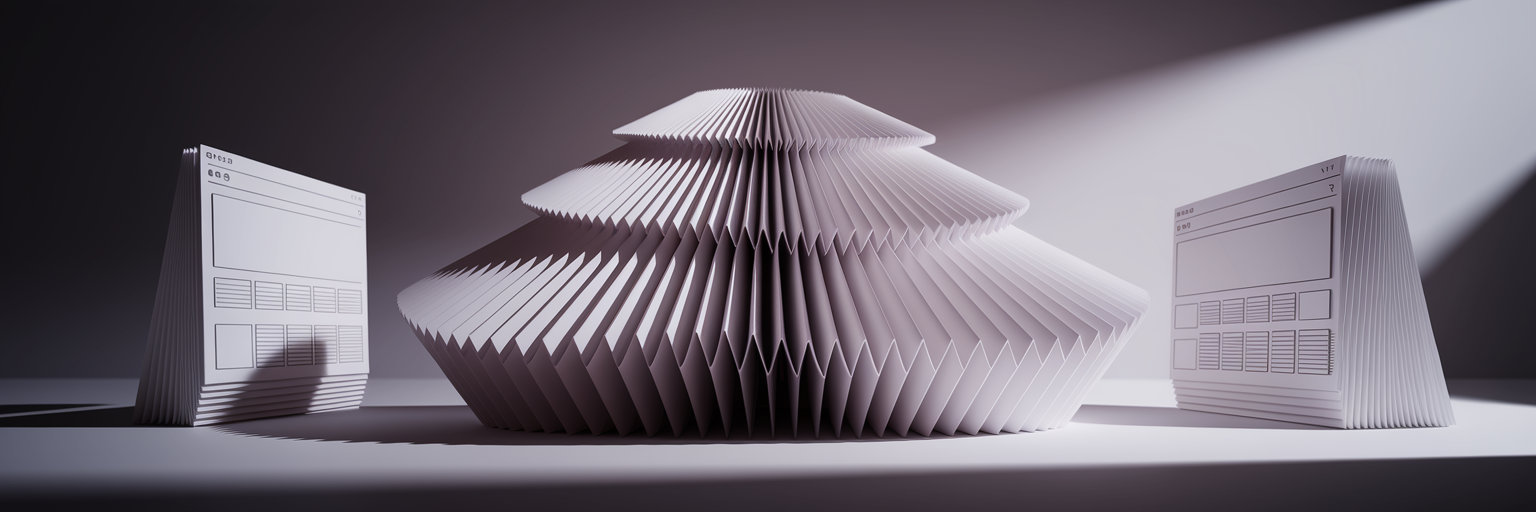The Creative Mess We All Know
We’ve all been there. Your browser groans under the weight of 42 open tabs, your desktop is a minefield of files named "Screen Shot 2025-10-26 at 11.45.12 AM.png," and your downloads folder has become a digital graveyard for brilliant ideas you swore you’d come back to. This isn't just untidiness; it's a direct barrier to creative momentum. Every minute spent hunting for that one perfect reference is a minute not spent designing.
That feeling of knowing you saved the perfect example of a checkout flow but being unable to find it is more than just frustrating. It breaks your focus and drains your energy. The hidden cost of this disorganization is lost time and stalled projects. This is where a simple, powerful habit can completely change your process. Learning how to use tags to find design references is not another chore to add to your list; it's the key to turning that chaos into a streamlined, searchable library. Ready to get started?
Why a Tagging Mindset Beats Folders
For years, we’ve been trained to think in folders. But for creative work, a folder-based system has a fundamental flaw: an item can only exist in one place. Picture this: you save a brilliant mobile banking app UI. Does it go in your 'Mobile UI' folder, your 'Fintech' folder, or your 'Dark Mode' folder? With folders, you're forced to make a choice you'll likely second-guess later.
Tags, on the other hand, are beautifully flexible. They are non-exclusive labels that allow a single reference to live in multiple contexts. That same banking app can be tagged with mobile-ui, fintech, dark-mode, and data-visualization all at once. This enables contextual retrieval, the ability to find what you need based on your current task, not where you originally filed it. This shift in thinking is central to better design reference organization.
Adopting a tagging mindset also encourages more intentional curation. The act of adding tags forces you to pause and identify exactly why a reference is valuable to you. This shift in mindset is just one of many ways to refine your process. You can explore other creative workflow tips on our blog.
| Factor |
Folder-Based System |
Tag-Based System |
| Flexibility |
Rigid; one location per item |
Fluid; multiple tags per item |
| Discoverability |
Limited to one path |
Discoverable from many angles |
| Context |
Context is lost once filed |
Context is embedded in the tags |
| Scalability |
Becomes complex and deep |
Scales cleanly with new tags |
This table illustrates the structural differences in how inspiration is stored and retrieved. A tag-based system is inherently more dynamic and aligned with the non-linear nature of creative thought.
Creating Your Personal Tagging Framework

Building a creative workflow tagging system that works for you doesn't have to be complicated. The key is to start with a solid foundation and build from there. Instead of trying to create hundreds of tags at once, begin with a few core categories that reflect how you think and work.
Start with Broad Categories
Think of these as the main buckets for your inspiration. A few high-level categories will cover most of what you save. Here are some ideas to get you started:
- Content-Type:
website, article, image, video
- Project:
client-x, portfolio-redesign, side-project
- Style:
minimalist, brutalist, retro, corporate
- Component:
button, form, navigation, footer
Establish Consistent Naming Rules
Consistency is what makes a tagging system truly powerful. Without it, you’ll end up with duplicate tags like dark-mode, DarkMode, and dark mode, which defeats the purpose. This principle is echoed by productivity experts; as highlighted in Zapier's guide on file tagging, a consistent naming convention is key to a functional system. Set a few simple rules and stick to them:
- Use lowercase only (e.g.,
dark-mode not Dark-Mode)
- Use hyphens instead of spaces (e.g.,
user-onboarding)
- Stick to singular nouns (e.g.,
button not buttons)
To make it even easier, consider creating a simple "tag dictionary" in a notes app to define your core tags. Start with just 5-10 essential tags and let your system grow organically as you save new inspiration. This makes the process feel much more achievable.
Smart Tagging for Design-Specific Needs
Once you have a general framework, it’s time to build a vocabulary that speaks your design language. This is where you learn how to tag inspiration for your actual projects, moving from broad categories to a granular, design-specific system.
Tagging Aesthetics and Elements
Get specific about what you’re saving. The more detailed your tags, the easier it will be to find exactly what you need later. Think about the visual details that make a design stand out.
- Aesthetic:
glassmorphism, bauhaus, retro-90s, claymorphism
- UI/UX Element:
micro-interaction, page-transition, hover-effect, onboarding-flow
- Layout:
grid-system, asymmetrical, split-screen
- Typography:
serif-headline, grotesk-body, mono-code
Using Task-Based Tags
Your tagging system can also reflect your workflow. Create tags that align with different stages of the design process, turning your library into a project management tool. Consider tags like moodboard-fodder, competitor-analysis, wireframe-reference, or client-approved.
This is where visual bookmarking for designers becomes incredibly powerful. With a tool like Bookmarkify, you can save a site and instantly apply unlimited tags like saas, dark-ui, and onboarding-flow. To build a library worth tagging, you need a steady stream of high-quality work. The daily inspiration feed is a great place to discover fresh websites and apps to analyze and save.
From Tagging to Finding in Seconds

Here’s the payoff. Imagine you need inspiration for a minimalist, high-end fashion e-commerce site. Instead of endlessly scrolling or searching vague terms, you simply combine your tags. Filtering by minimalist + ecommerce + fashion + product-page instantly surfaces a curated gallery of hyper-relevant examples.
This speed eliminates the "blank page" syndrome and gives you more time for the actual creative work. This is how you use tags to find design references efficiently. A dedicated tool transforms your library from a static list into an interactive workspace. With features like our Design Analyse, you can instantly see the fonts, colors, and assets of your tagged sites, turning saved content into actionable data.
You can also use different view modes, like a grid for a quick overview or a mobile preview to check responsiveness, making your library a dynamic part of your workflow. Here’s an actionable tip: take 15 minutes right now and do some "retrospective tagging." Go back to the last 10 things you saved and apply your new tagging rules. It’s the fastest way to solidify the habit.
Keeping Your Inspiration Library Healthy
A great tagging system is a living entity, not a one-time setup. To maintain excellent design reference organization, schedule a quick "tag audit" every few months. This is your chance to merge duplicates (e.g., combining nav and navigation into one) and prune any tags you no longer use. This keeps your system clean and efficient.
Remember, consistency is more important than perfection. The best system is the one you’ll actually use every day. Stop letting great ideas get lost in digital clutter and start building a library that works as hard as you do.
Ready to turn your inspiration chaos into a streamlined, searchable library? Start organizing with Bookmarkify today and never lose a great idea again.












